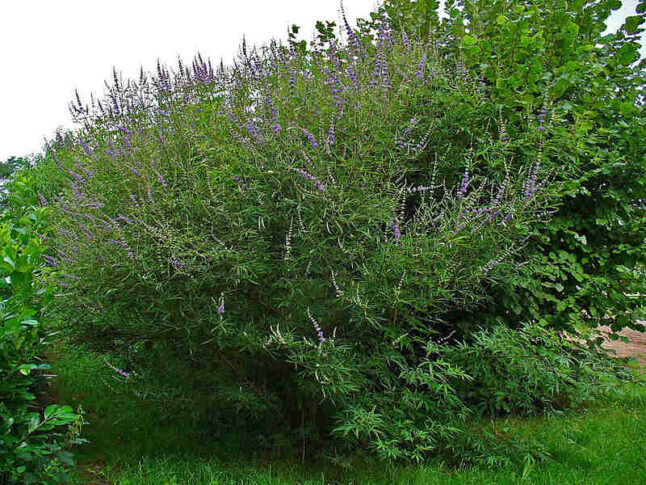
Invasive trees can take over your Austin yard (and your neighbors’ yards too), but what can you do? First and foremost, choose other greenery to surround your home. Below you’ll find a list of the most invasive trees in Austin and some native plants that are far better options.
Invasive trees are as much a part of the Austin, Texas, landscape as the people from other states who have recently moved here. But, unlike our human neighbors, who are mostly just nice people jamming up MoPac, invasive plant species costs the U.S. an estimated $137 billion each year.
When it comes to invasive trees, there are no legal restrictions on their sale and distribution. So they’re easy to buy from nurseries without the gardener ever knowing. Knowing which trees are invasive will help you avoid them and instead make a positive addition to Austin’s tree canopy.
The 9 most invasive trees in Austin are:
- Chinaberry
- Chinese Tallow
- Golden Running Bamboo
- Lilac Chaste Tree
- Mimosa/Silk Tree
- Paper Mulberry
- Privet
- Red-Tipped Photinia
- Tree of Heaven
1. Chinaberry (Melia azederach)

Introduced as an ornamental tree in the late 1700s, chinaberry trees have been in the nation longer than most of our ancestors. Unfortunately, the tree arrived without any of its natural enemies (pest or disease.) That’s why it was able to grow unchecked wherever it was planted.
Wherever chinaberry grows, it takes over, displacing native species. Removal takes persistent effort and may require chemicals.
2. Chinese Tallow (Triadica sebifera)

Another early arrival to the U.S., Americans imported Chinese tallow trees as a source of oil for the soap industry. This tree spreads rapidly and is capable of transforming an area into a tallow forest–eliminating native species. Both manual and chemical methods are necessary to control its spread.
3. Golden Running Bamboo (Phyllostachys aurea)

Bamboo, often planted in backyards as a screening device, is one of the most infestation-forming invasives. Besides taking over landscapes, bamboo leaf litter disrupts aquatic food webs. Even worse, it attracts roaches in backyards. Plant with caution, installing a barrier 3 feet deep to prevent spreading. You can control bamboo’s growth by cutting it back at ground-level often.
4. Lilac Chaste Tree (Vitex agnus-castus)

The same qualities that make the lilac chaste tree such an attractive landscape plant in Texas also make it a noxious invasive. It can grow in any soil and doesn’t mind heat or drought. While its blooms are fragrant and stunning, it seeds profusely. Its offspring take over areas where they establish and out-compete native species.
You can control lilac chaste tree’s spread by cutting the tree back to a few inches every year to maintain it at shrub-size.
5. Mimosa/Silk Tree (Albizia julibrissin)

This tree’s delicate, visually-pleasing profile and suffocatingly sweet blossoms tempt many in Austin to include it in their yard. But what looks like an innocent tree, is a monster in disguise.
This short-lived, messy tree is susceptible to a wilting disease and prone to reproduce where it is least wanted. That’s why you see many along waterways and in abandoned lots. The best policy is never to plant a mimosa on your property.
6. Paper Mulberry (Broussonetia papyrifera)

Once used as an ornamental and shade tree, and now that we know better, it’s too late. Fast-growing paper mulberry grows to a height of 45 feet but is weak-wooded and shallow-rooted. It often blows over during storms, damaging homes and cars. It also spreads far and wide, displacing native plants.
Never plant a paper mulberry, and if you have an ancient one in your yard, consider having it removed before it comes crashing down.
7. Privet (Ligustrum spp.)

Both Japanese and Chinese privet species were introduced to the U.S. in the 1700s as hedge and garden plants. As we see in other invasive species, they easily escape cultivation and run amok in native landscapes.
In fact, the privet has proven so invasive that volunteers regularly prowl Austin parks on search-and-destroy missions, ripping out glossy privets wherever they’re found. Controlling privet is possible through mechanical and chemical means, but the best policy is to avoid planting them in the first place.
8. Red-Tipped Photinia (Photinia x fraseri)

Photinia comes in many varieties, all Asian in origin and all invasive. Their glossy evergreen leaves add visual appeal, but when they spread, they wreck ecosystems by crowding out the natives.
Aside from its invasiveness, photinia also is prone to a leaf spotting disease and may give your property a dated look. You can remove photinia by hand when young or cut to a stump.
9. Tree of Heaven (Ailanthus altissima)

The name sounds divine, but this rapidly-growing tree is closer to a devil when it comes to its ability to take over a natural area. Imported as an ornamental shade tree and prized for its ability to grow under poor soil conditions, tree of heaven can now be found in at least a third of the United States.
Able to reach heights of 70 feet, ailanthus happily grows out of cracks in concrete, edges of forests, and anywhere a seed can find room.

Go With Native Trees Instead
Why mess with an invasive tree when there are so many native trees and plants that are perfectly suited to Austin’s dry climate? That’s the advice of Morgan Treadwell, assistant professor, and Extension Range Specialist at Texas A&M University.
Invasive trees “not only disrupt the food web but have become invasive pests that degrade habitat in remaining natural areas,” Treadwell says.
She urges homeowners to look for Austin native plants that are well-adapted, compete with weeds, and require little irrigation. When choosing trees for your yard, don’t forget that you also need to consider the hardiness zone, amount of light, and soil type.
When to Hire a Landscaping Pro
Is that an invasive plant or native plant? If you’re planning a makeover of your yard with new trees, shrubs, flowers, it’s best to hire an Austin landscaper who can help you design the perfect yard with just the right mix of greenery and color.
Oh, and for even more information on native alternatives to invasive exotic plants, check out the City of Austin’s free guide “Native and Adapted Landscape Plants.”
Main Photo Credit: Tree of Heaven: NatureServe / Flickr / CC BY 2.0





